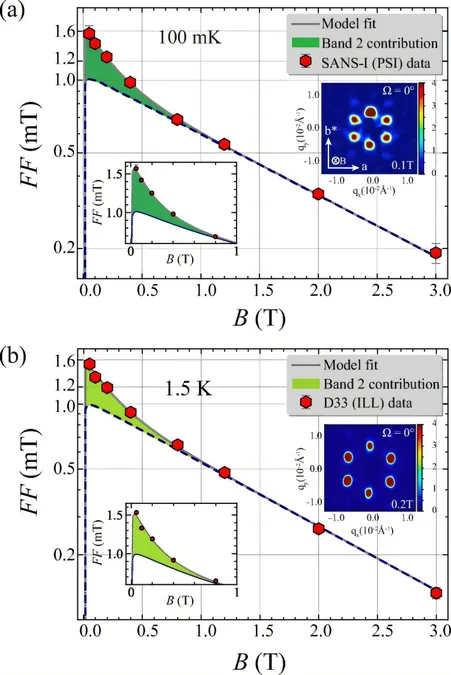
Unlocking the Secrets of Superconductivity: Groundbreaking Insights into 2H-NbSe₂
2025-04-09
Author: John Tan
What Is Superconductivity?
Superconductivity is an astonishing quantum phenomenon where materials conduct electricity without resistance at exceedingly low temperatures. In specific compounds, the behavior stems from multiple electronic bands contributing to this marvel, resulting in various superconducting energy gaps — a complex interaction known as multiband superconductivity.
A Revolutionary Study Comes to Light
A collaborative team of researchers from Lund University in Sweden, Institut Laue Langevin in France, and other esteemed European institutions recently unveiled significant findings about the multiband superconductivity found in the transition metal dichalcogenide 2H-NbSe₂. This material showcases a fascinating vortex lattice when exposed to magnetic fields.
Decoding the Mystery of Electron Bands
The study, published in *Physical Review Letters*, aims to demystify how multiple electronic bands influence superconductivity. Dr. Ahmed Alshemi, a postdoctoral fellow at Lund University and the paper’s lead author, emphasized the necessity of understanding these electronic bands. Previous theoretical predictions hinted that each band impacts superconductivity in its own unique way.
Innovative Techniques Unveil Hidden Structures
The research utilized Small-Angle Neutron Scattering (SANS), a cutting-edge technique capable of delving deep into the structural arrangements of magnetic vortices within superconductors. Alshemi explained that applying a magnetic field created lines of magnetic flux, known as a 'vortex lattice', allowing researchers to observe how its structure evolves with temperature and varying magnetic field strengths.
Remarkable Discoveries in Superconducting States
One of the groundbreaking results was the confirmation that 2H-NbSe₂ possesses two distinct superconducting gaps, revealing the presence of two separate electron bands exhibiting superconductivity with varying characteristics. Surprisingly, under moderate magnetic fields (around 0.8 Tesla), one of these bands experienced a notable decline in superconductivity, despite the overall material remaining in a superconducting state.
Implications for Future Technologies
The research not only challenges existing theoretical models of superconductivity but also paves the way for new experiments. Future investigations will focus on how external influences like changes in magnetic field direction affect these multiband superconductors. Alshemi plans to explore exotic phenomena such as orbital Fulde-Ferrell-Larkin-Ovchinnikov (orbital FFLO) states, charge density waves (CDW), and pair density waves (PDW) using advanced neutron scattering techniques.
The Road Ahead: Advancements in Superconducting Materials
This research could significantly accelerate the discovery of new superconducting materials tailored for next-gen technologies, including ultra-efficient power systems and quantum computing solutions. By enhancing our understanding of these complex structures, the team aims to contribute substantially to innovative and sustainable superconducting technologies of the future.



 Brasil (PT)
Brasil (PT)
 Canada (EN)
Canada (EN)
 Chile (ES)
Chile (ES)
 Česko (CS)
Česko (CS)
 대한민국 (KO)
대한민국 (KO)
 España (ES)
España (ES)
 France (FR)
France (FR)
 Hong Kong (EN)
Hong Kong (EN)
 Italia (IT)
Italia (IT)
 日本 (JA)
日本 (JA)
 Magyarország (HU)
Magyarország (HU)
 Norge (NO)
Norge (NO)
 Polska (PL)
Polska (PL)
 Schweiz (DE)
Schweiz (DE)
 Singapore (EN)
Singapore (EN)
 Sverige (SV)
Sverige (SV)
 Suomi (FI)
Suomi (FI)
 Türkiye (TR)
Türkiye (TR)
 الإمارات العربية المتحدة (AR)
الإمارات العربية المتحدة (AR)